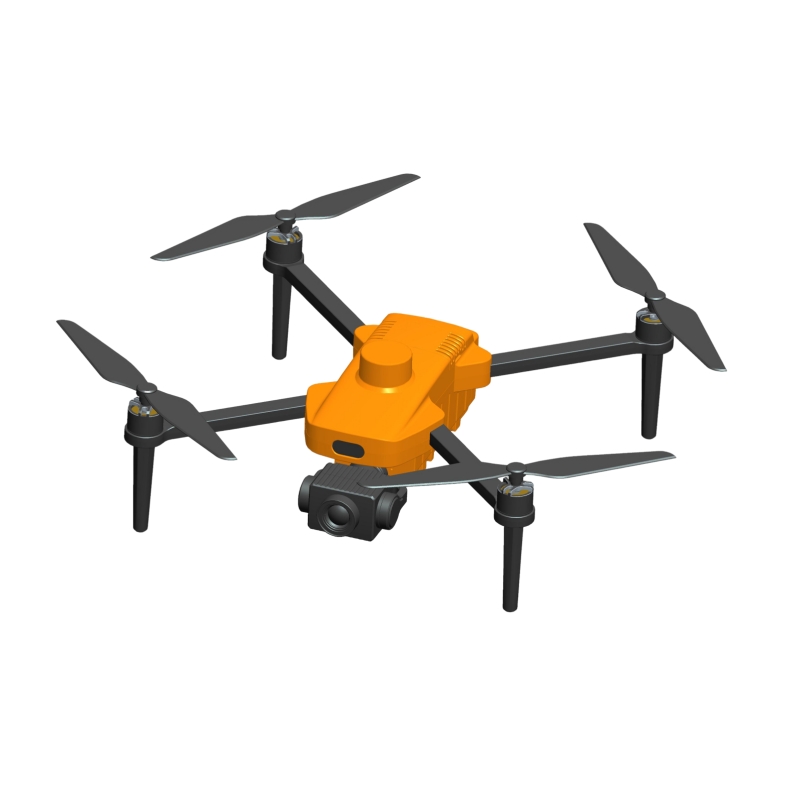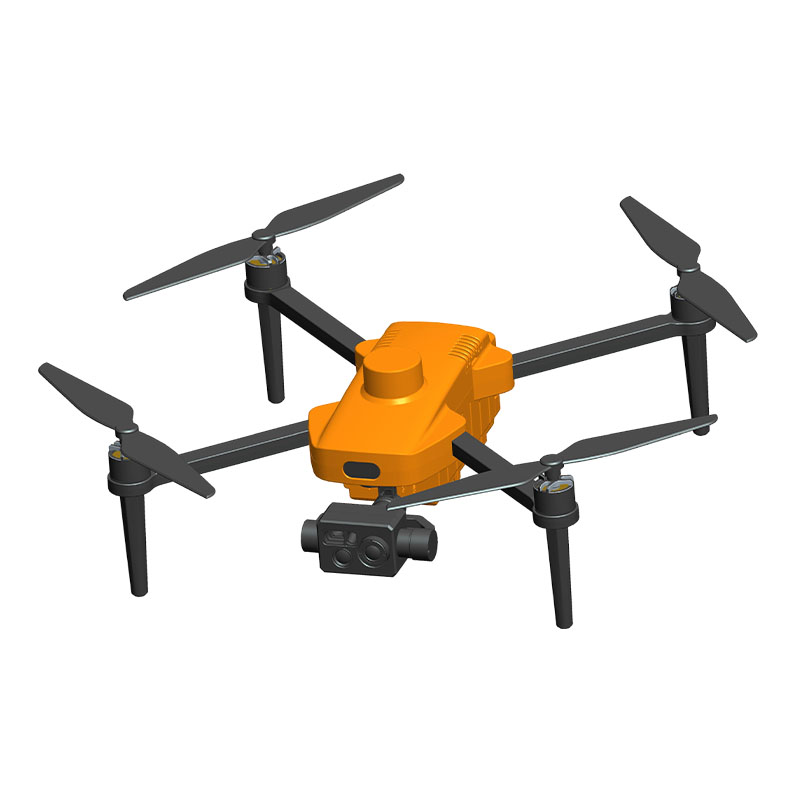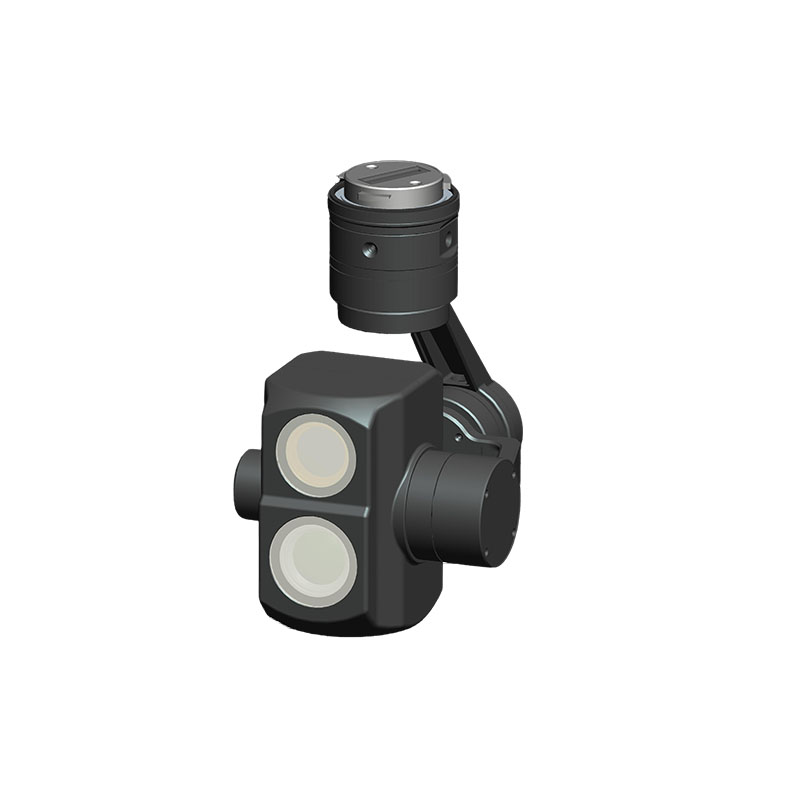How does hydrological flow radar overcome the high suspended matter environment that traditional flow meters cannot cope with?
Release Time : 2025-04-05
In the fields of water conservancy, environmental protection and industrial production, flow measurement is a key link to ensure the efficient operation of the system. When facing a high suspended matter environment, traditional flow meters often cause measurement errors or even equipment damage due to problems such as medium adhesion and equipment blockage. Based on the principle of Doppler effect, hydrological flow radar achieves accurate adaptation to complex working conditions through non-contact measurement technology, especially in high suspended matter scenes such as sewage treatment and petrochemicals.
In the fields of water conservancy, environmental protection and industrial production, flow measurement is a key link to ensure the efficient operation of the system. When facing a high suspended matter environment, traditional flow meters such as mechanical and vortex flow meters often cause measurement errors or even equipment damage due to problems such as medium adhesion and equipment blockage. Taking sewage treatment plants as an example, a large amount of bubbles and suspended matter in wastewater will interfere with the measurement accuracy of traditional flow meters, while the high temperature and high pressure media in the petrochemical industry are prone to equipment corrosion, further reducing reliability. As a new type of non-contact measurement technology, hydrological flow radar achieves precise adaptation to complex working conditions through the principle of Doppler effect, especially in high suspended solids scenes such as sewage treatment and petrochemical industry.
1. Limitations of traditional flow meters in high suspended solids environments
The measurement principles of traditional flow meters are mostly based on mechanical contact or physical properties of the medium, and face multiple challenges in high suspended solids environments. Take the vortex flowmeter as an example. It measures the flow velocity of the fluid through the vortex effect, but when the diameter of the suspended particles in the fluid exceeds the vortex blade spacing, the equipment is prone to blockage. A sewage treatment plant once had fibrous materials in the wastewater blocking the vortex flowmeter, resulting in flow data distortion, which in turn affected the sewage treatment efficiency. Mechanical flowmeters frequently have measurement errors in the petrochemical industry due to the problem of medium adhesion. A refinery has mechanical parts worn due to medium corrosion, and the annual maintenance cost is as high as hundreds of thousands of yuan.
2. Technical principles and advantages of hydrological flow radar
Based on the principle of Doppler effect, hydrological flow radar calculates flow velocity and flow by emitting radar waves and receiving reflection signals from particles or interfaces in the fluid. Its core technical advantages are reflected in the following aspects:
Non-contact measurement: Radar flowmeters do not need to be in direct contact with the fluid, avoiding the problems of medium adhesion and equipment corrosion. For example, in the petrochemical industry, a radar flowmeter continues to operate stably under high temperature and high pressure environments, and the measurement accuracy remains within ±1%, far exceeding traditional mechanical flowmeters.
Multi-band signal processing: Through optimization algorithms and multi-band technology, radar flowmeters can effectively distinguish between bubbles and liquids. After a sewage treatment plant adopted radar flowmeters, it successfully filtered out more than 90% of bubble interference.
Anti-interference ability: Radar flowmeters are not affected by factors such as weather, light, and water quality changes, and can still work stably in severe weather such as heavy rain and strong winds. During the typhoon, a hydrological monitoring station used radar flowmeters to monitor river flow in real time, providing key data support for flood control decisions.
3. Specific application of hydrological flow radar in high suspended solids environment
Sewage treatment industry: Radar flowmeters can effectively filter bubble interference and provide accurate flow data through multi-band signal processing technology. For example, after a sewage treatment plant adopted radar flowmeters, the flow measurement error was reduced from ±5% to ±0.5%, and the annual maintenance cost was reduced by 60%.
Petrochemical industry: Radar flowmeters perform well in high temperature, high pressure and corrosive media environments. After a refinery adopted radar flowmeters, the service life of the equipment was extended to more than 10 years, and the measurement accuracy was kept within ±1%, which significantly improved production efficiency.
River flow monitoring: Radar flowmeters combined with radar water level sensors can achieve all-weather and all-day flow monitoring. During heavy rains, a hydrological monitoring station used radar flowmeters to monitor river flow in real time, providing accurate data support for flood control decisions.
4. Quantitative analysis of technical advantages
Measurement accuracy: The measurement accuracy of radar flowmeters can usually reach within ±1%, and some high-end models even reach ±0.5%. For example, after a sewage treatment plant adopted radar flowmeters, the flow measurement error was reduced from ±5% to ±0.5%, significantly improving data reliability.
Service life: Due to the non-contact measurement method, the wear degree of radar flowmeter is much lower than that of traditional flowmeter. A petrochemical enterprise reported that the service life of radar flowmeter can reach more than 10 years, far exceeding the 3-5 years of traditional mechanical flowmeter.
Maintenance cost: The maintenance cost of radar flowmeter is low, and users only need to clean and calibrate it regularly. After a sewage treatment plant adopted radar flowmeter, the annual maintenance cost was reduced by 60%, significantly reducing operating costs.
Hydrological flow radar effectively overcomes the limitations of traditional flowmeters in high suspended solids environments through non-contact measurement, multi-band signal processing and anti-interference technology. Its application in sewage treatment, petrochemical and river flow monitoring has significantly improved measurement accuracy and equipment reliability and reduced maintenance costs.
In the fields of water conservancy, environmental protection and industrial production, flow measurement is a key link to ensure the efficient operation of the system. When facing a high suspended matter environment, traditional flow meters such as mechanical and vortex flow meters often cause measurement errors or even equipment damage due to problems such as medium adhesion and equipment blockage. Taking sewage treatment plants as an example, a large amount of bubbles and suspended matter in wastewater will interfere with the measurement accuracy of traditional flow meters, while the high temperature and high pressure media in the petrochemical industry are prone to equipment corrosion, further reducing reliability. As a new type of non-contact measurement technology, hydrological flow radar achieves precise adaptation to complex working conditions through the principle of Doppler effect, especially in high suspended solids scenes such as sewage treatment and petrochemical industry.
1. Limitations of traditional flow meters in high suspended solids environments
The measurement principles of traditional flow meters are mostly based on mechanical contact or physical properties of the medium, and face multiple challenges in high suspended solids environments. Take the vortex flowmeter as an example. It measures the flow velocity of the fluid through the vortex effect, but when the diameter of the suspended particles in the fluid exceeds the vortex blade spacing, the equipment is prone to blockage. A sewage treatment plant once had fibrous materials in the wastewater blocking the vortex flowmeter, resulting in flow data distortion, which in turn affected the sewage treatment efficiency. Mechanical flowmeters frequently have measurement errors in the petrochemical industry due to the problem of medium adhesion. A refinery has mechanical parts worn due to medium corrosion, and the annual maintenance cost is as high as hundreds of thousands of yuan.
2. Technical principles and advantages of hydrological flow radar
Based on the principle of Doppler effect, hydrological flow radar calculates flow velocity and flow by emitting radar waves and receiving reflection signals from particles or interfaces in the fluid. Its core technical advantages are reflected in the following aspects:
Non-contact measurement: Radar flowmeters do not need to be in direct contact with the fluid, avoiding the problems of medium adhesion and equipment corrosion. For example, in the petrochemical industry, a radar flowmeter continues to operate stably under high temperature and high pressure environments, and the measurement accuracy remains within ±1%, far exceeding traditional mechanical flowmeters.
Multi-band signal processing: Through optimization algorithms and multi-band technology, radar flowmeters can effectively distinguish between bubbles and liquids. After a sewage treatment plant adopted radar flowmeters, it successfully filtered out more than 90% of bubble interference.
Anti-interference ability: Radar flowmeters are not affected by factors such as weather, light, and water quality changes, and can still work stably in severe weather such as heavy rain and strong winds. During the typhoon, a hydrological monitoring station used radar flowmeters to monitor river flow in real time, providing key data support for flood control decisions.
3. Specific application of hydrological flow radar in high suspended solids environment
Sewage treatment industry: Radar flowmeters can effectively filter bubble interference and provide accurate flow data through multi-band signal processing technology. For example, after a sewage treatment plant adopted radar flowmeters, the flow measurement error was reduced from ±5% to ±0.5%, and the annual maintenance cost was reduced by 60%.
Petrochemical industry: Radar flowmeters perform well in high temperature, high pressure and corrosive media environments. After a refinery adopted radar flowmeters, the service life of the equipment was extended to more than 10 years, and the measurement accuracy was kept within ±1%, which significantly improved production efficiency.
River flow monitoring: Radar flowmeters combined with radar water level sensors can achieve all-weather and all-day flow monitoring. During heavy rains, a hydrological monitoring station used radar flowmeters to monitor river flow in real time, providing accurate data support for flood control decisions.
4. Quantitative analysis of technical advantages
Measurement accuracy: The measurement accuracy of radar flowmeters can usually reach within ±1%, and some high-end models even reach ±0.5%. For example, after a sewage treatment plant adopted radar flowmeters, the flow measurement error was reduced from ±5% to ±0.5%, significantly improving data reliability.
Service life: Due to the non-contact measurement method, the wear degree of radar flowmeter is much lower than that of traditional flowmeter. A petrochemical enterprise reported that the service life of radar flowmeter can reach more than 10 years, far exceeding the 3-5 years of traditional mechanical flowmeter.
Maintenance cost: The maintenance cost of radar flowmeter is low, and users only need to clean and calibrate it regularly. After a sewage treatment plant adopted radar flowmeter, the annual maintenance cost was reduced by 60%, significantly reducing operating costs.
Hydrological flow radar effectively overcomes the limitations of traditional flowmeters in high suspended solids environments through non-contact measurement, multi-band signal processing and anti-interference technology. Its application in sewage treatment, petrochemical and river flow monitoring has significantly improved measurement accuracy and equipment reliability and reduced maintenance costs.







